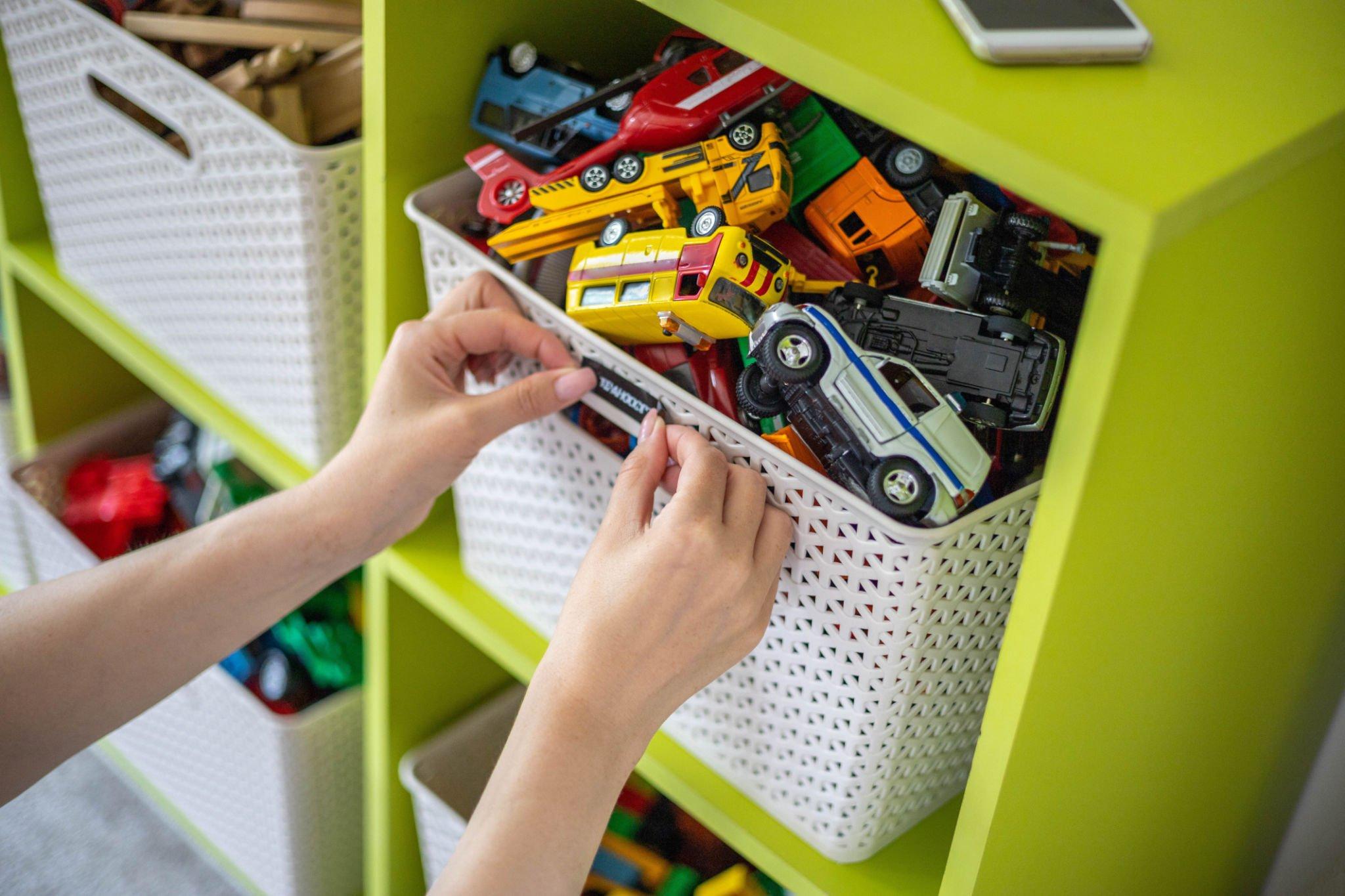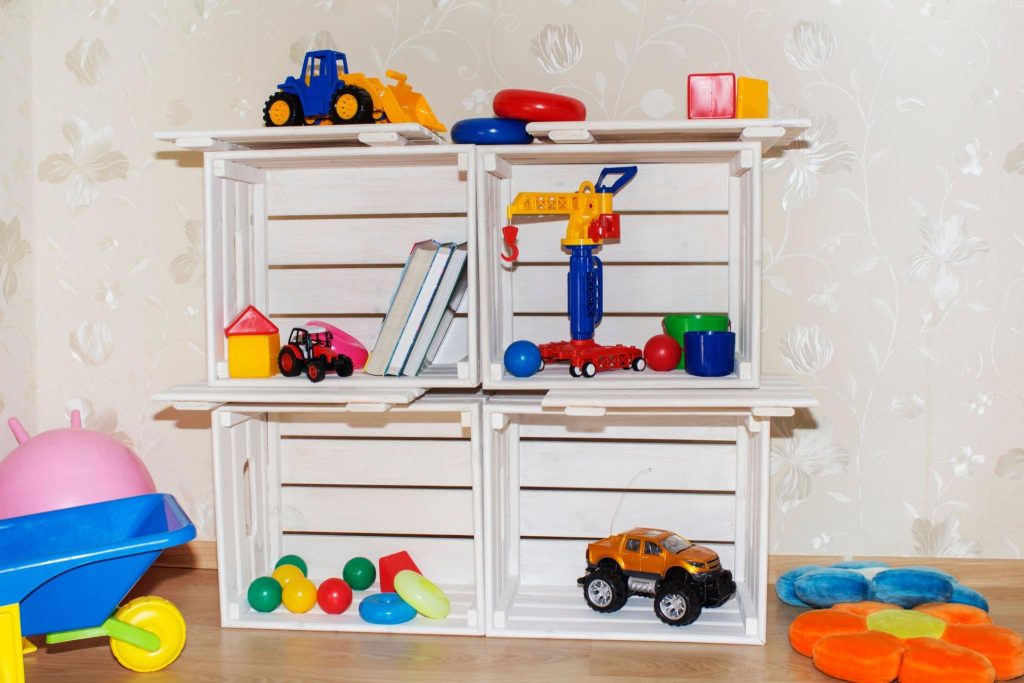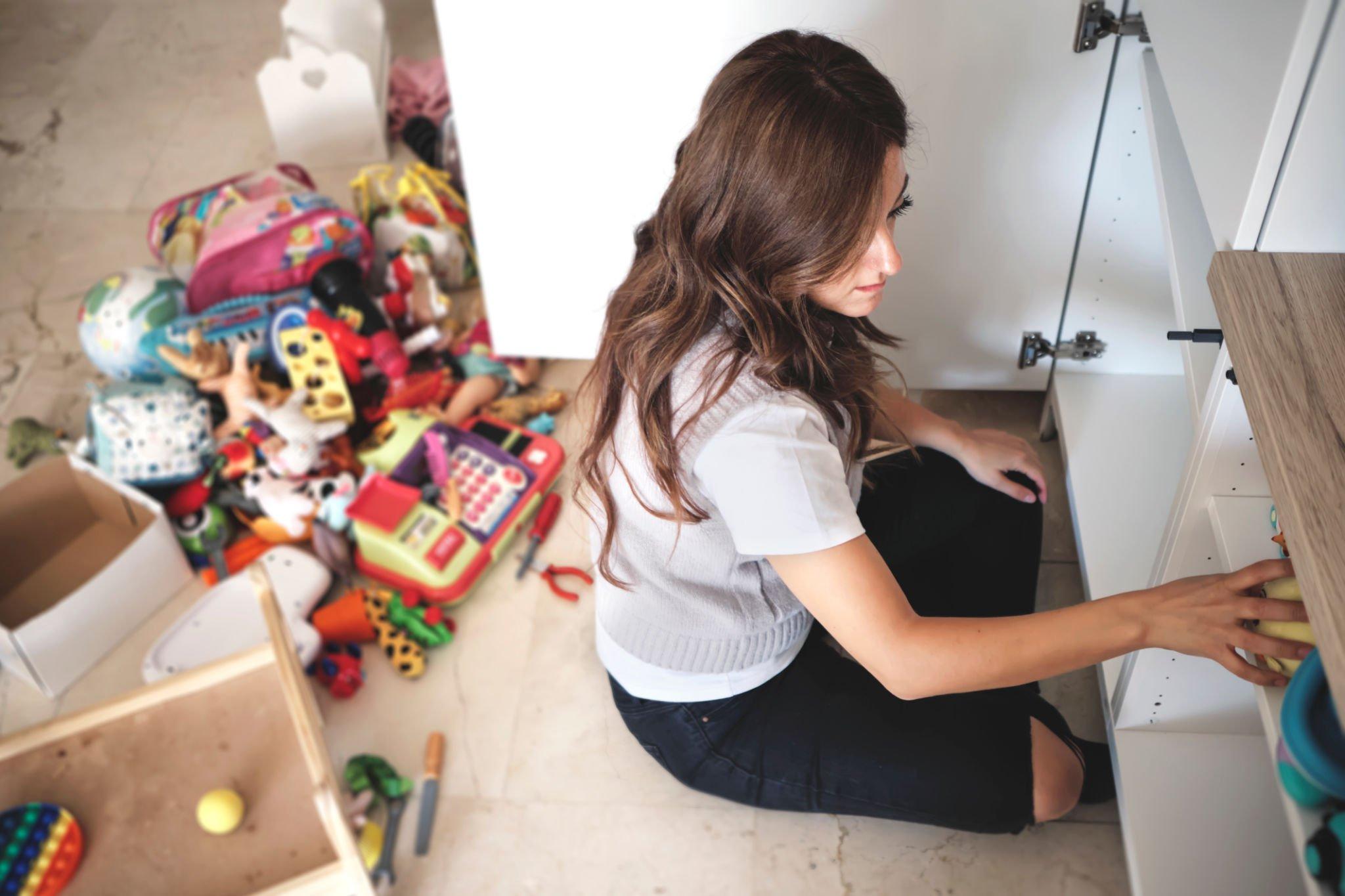Cause we are not only an online shop to sell products, we are here to help you create good memories for your children.
Quick Links
Get In Touch
2024 kidstore. All Rights Reserved
No products in the cart.

Having kids means having lots of toys. And if you’ve ever walked into a playroom or bedroom strewn with toys, you know how quickly chaos can take over. But fear not, because there’s a solution: smart storage ideas. In this article, we will explore 10 genius ways to help you finally gain control over the toy clutter and create an organized space for your kids.
From wall-mounted shelving units to toy storage bins with clear labels, we’ve gathered the most efficient and stylish storage solutions to make tidying up a breeze. These tips and tricks will not only bring order to your children’s toys but also teach them valuable organizational skills.
By incorporating these storage ideas into your home, you can create a designated spot for every toy and encourage your kids to take responsibility for cleaning up after themselves. Say goodbye to messy floors and hello to a clean and clutter-free space!
Join us on this journey from chaos to order, as we guide you through these 10 clever storage ideas that will transform your kids’ play area into a neat and organized oasis. Get ready to conquer the toy clutter once and for all!

Keeping your kids’ toys organized goes beyond just having a neat and tidy space. It has several benefits for both you and your children. Firstly, an organized toy storage system saves your time and energy by making it easier to find specific toys when your kids want to play with them. No more searching through a sea of toys!
Secondly, an organized play area promotes creativity and imagination. When toys are well-organized, children can easily access and see all the options available to them. This encourages them to explore different toys and engage in imaginative play.
Lastly, an organized space is safer for your kids. Cluttered floors increase the risk of accidents and tripping hazards. By having a designated storage system for toys, you can ensure that the play area is clear and safe.
Before diving into the world of toy storage solutions, it’s important to assess your specific needs. Every family and home is unique, so consider the following factors when evaluating your toy storage requirements.
Firstly, take into account the available space in your home. Do you have a dedicated playroom, or do your kids’ toys need to be stored in their bedrooms? Measure the dimensions of the space and consider how much storage furniture or shelving units it can accommodate.
Next, consider the types of toys your kids have. Are they mostly small figurines, large stuffed animals, or a mix of different toys? This will help you determine the type and size of storage containers or solutions that will work best for your situation.
Lastly, involve your kids in the assessment process. Ask them about their preferences and what kind of storage solutions they would find appealing and easy to use. By involving them from the start, you can instill a sense of ownership and responsibility for keeping their toys organized.
If you’re dealing with limited space, don’t fret! There are plenty of creative toy storage solutions that can maximize space utilization while keeping things organized.
One idea is to utilize vertical space by installing wall-mounted shelving units. These shelves not only provide storage but also act as a decorative element in the room. You can display your kids’ favourite toys or books on these shelves, making them easily accessible while adding a touch of style to the space.
Another option is to invest in furniture pieces that have built-in storage. For example, a bed with drawers underneath or a bench with hidden storage compartments can provide additional space for storing toys. These dual-purpose furniture pieces are great for small bedrooms or playrooms where every inch counts.
If floor space is a challenge, consider utilizing the back of doors or even the ceiling for storage. Over-the-door organizers with pockets can hold small toys or art supplies, while hanging nets or hammocks from the ceiling can store stuffed animals or balls.
Remember, the key to maximizing storage in small spaces is to think outside the box and make use of every available nook and cranny.
If you’re looking for budget-friendly storage solutions, DIY options can be a great way to go. Not only do they save your money, but they also allow you to customize the storage to fit your specific needs.
One simple DIY idea is to repurpose old crates or wooden boxes. Paint them in fun colors or patterns and stack them to create a unique and personalized toy storage system. You can even attach wheels to the bottom for easy mobility.
Another DIY option is to create a toy storage wall using PVC pipes. Cut the pipes into different lengths and attach them to a wooden board or directly to the wall. These pipes can hold small toys or art supplies like markers and paintbrushes. Plus, they add a fun and modern touch to the room.
If you’re feeling particularly crafty, you can make your own fabric storage baskets using old t-shirts or fabric scraps. These baskets can be easily folded and stored when not in use, making them perfect for temporary storage or when you need to declutter quickly.
When it comes to toy storage, furniture can be your best friend. Not only does it provide a functional storage solution, but it also adds to the overall aesthetics of the room.
One popular furniture piece for toy storage is the classic toy chest. These chests come in various sizes and designs, and they provide a spacious and easily accessible storage solution for larger toys or stuffed animals. Look for a chest with safety hinges to prevent accidental injuries.
Another furniture option is a bookshelf with storage bins or baskets. This combination allows you to display books, while the bins or baskets can hold smaller toys or art supplies. Opt for clear or labeled bins to make it easier for your kids to find and put away their toys.
If you have a play table or desk in the room, consider investing in one with built-in storage compartments. These compartments can hold art supplies, puzzles, or small toys. This way, everything your kids need for playtime or creative projects is within arm’s reach.
Remember to choose furniture pieces that are child-friendly and safe. Look for rounded edges, sturdy construction, and non-toxic finishes.

To prevent toy overload and keep things organized, consider implementing a toy rotation system. This involves periodically swapping out a portion of your kids’ toys and storing them away while bringing out a fresh set of toys to play with.
Rotating toys has several benefits. Firstly, it reduces clutter and makes it easier for your kids to focus on a smaller selection of toys. This can enhance their play experience and encourage creativity.
Secondly, toy rotation helps keep toys exciting and new. When toys are constantly available, they can lose their appeal over time. By rotating toys, you can create a sense of novelty and make playtime more engaging for your kids.
To implement a toy rotation system, designate a storage area or containers for the toys that are not currently in use. Label these containers with the date or theme of the toys inside. Then, periodically swap out toys, either on a weekly or monthly basis, depending on your preference. This way, your kids will always have a fresh set of toys to explore.
One of the keys to maintaining an organized toy storage system is proper labeling and categorization. This not only makes it easier for your kids to find and put away toys but also teaches them valuable organizational skills.
Start by categorizing toys into different groups. For example, you can have separate categories for building blocks, dolls, puzzles, and art supplies. This will help you determine the type and size of storage containers needed for each category.
Next, label the storage containers clearly. Use pictures or words, depending on the age and reading level of your kids. This way, they can easily identify where each toy belongs and develop a habit of returning toys to their designated spots.
Consider using transparent or clear bins for storing toys. This allows your kids to see the contents without having to open each container. It also makes it easier for them to find specific toys when they’re in the mood to play.
Lastly, involve your kids in the labeling process. Let them choose the labels or even create their own using stickers, markers, or drawings. This will make them feel more invested in the organization system and more likely to follow it.
Teaching your kids how to organize and take responsibility for their toys is a valuable life skill. By involving them in the organization process, you can instill a sense of ownership and pride in keeping their play area tidy.
Start by setting clear expectations and guidelines for toy organization. Explain to your kids why it’s important to keep their toys organized and how it benefits them. Make it a positive and fun experience by turning tidying up into a game or challenge.
Assign specific tasks to your kids based on their age and abilities. For example, younger kids can be responsible for putting stuffed animals in a designated bin, while older kids can sort and categorize toys into different storage containers.
Praise and reward your kids for their efforts. Positive reinforcement goes a long way in motivating them to continue organizing their toys. Consider creating a reward system, such as a sticker chart or small incentives, to acknowledge their progress and achievements.
Lastly, lead by example. Show your kids that you also value organization by keeping your own belongings tidy and organized. Kids are more likely to adopt good habits when they see their parents practicing them.
Once you’ve established an organized toy storage system, it’s important to maintain it to ensure long-term success. Here are a few tips for keeping things in order.
Firstly, set aside regular time for toy cleanup. This can be a daily or weekly routine, depending on your preference and the number of toys your kids have. Encourage your kids to participate in the cleanup process, making it a part of their daily routine.
Periodically assess and declutter the toy collection. Toys that are broken, no longer played with, or no longer age-appropriate can be donated or passed on to other children. This helps prevent the accumulation of unnecessary toys and keeps the storage system streamlined.
Regularly check and adjust the organization system as needed. As your kids’ toy collection grows or changes, you may need to reevaluate the storage solutions and make adjustments. This ensures that the system continues to meet your family’s needs.
Lastly, remember that organizing toys is an ongoing process. It’s not a one-time task but rather a habit that needs to be maintained. By staying consistent and involving your kids in the process, you can create a lasting and organized play area for your family.
2024 kidstore. All Rights Reserved